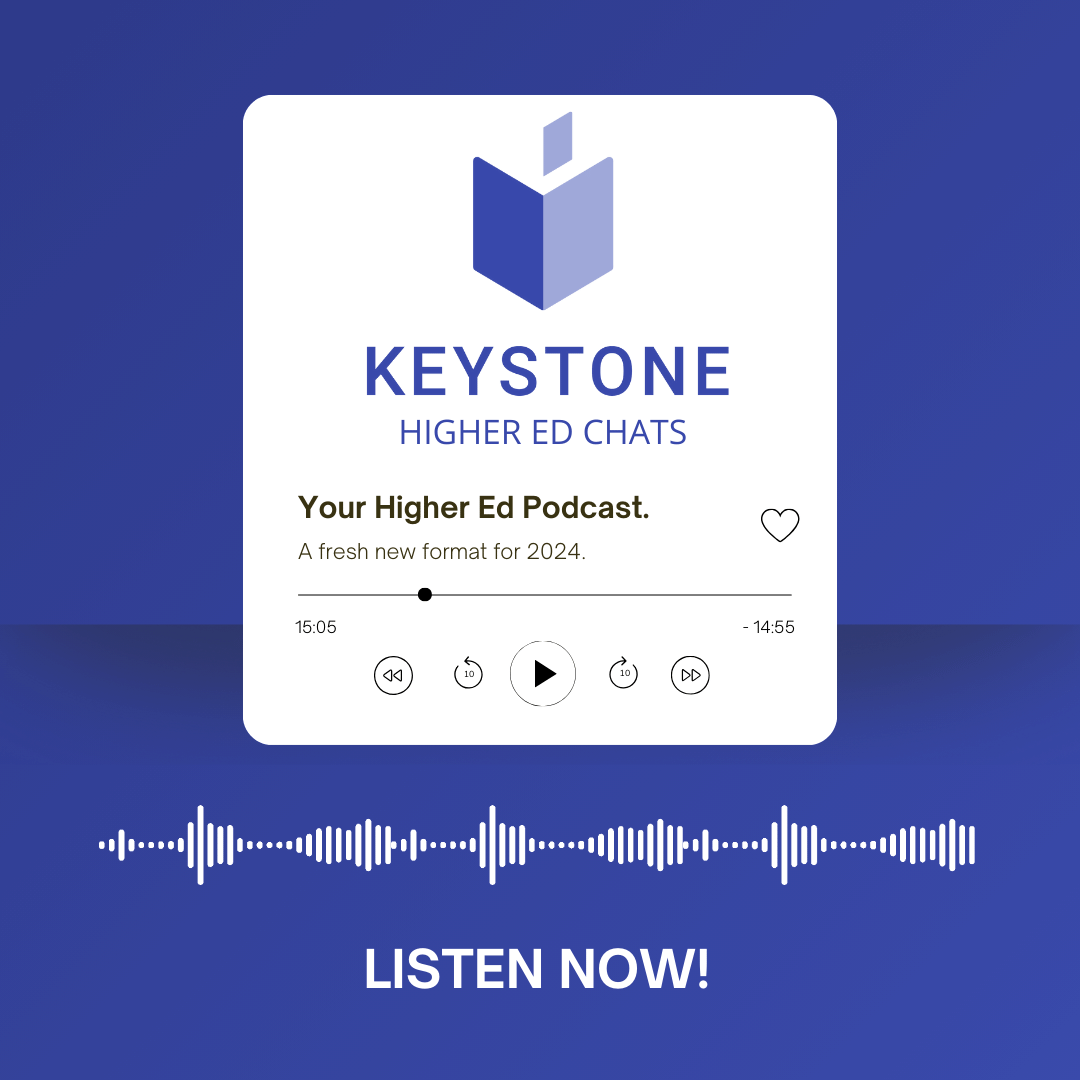- SERVICES
- HIGHER EDUCATION MARKETING
- ENGAGEMENT & ENROLLMENT MANAGEMENT
- STUDENT RECRUITMENT AGENCIES
- PROFESSIONAL EDUCATION & TRAINING
- WHO WE ARE
WHO WE ARE
Learn more about Keystone Education Group, including our leadership structure, why choose Keystone as your educational partner, and company press releases.
QUICK LINKS
- RESOURCES
RESOURCES
Find a range of helpful resources to help with your educational marketing. From on-demand webinars, reports & data, to customer testimonials and our downloadable media kit.
QUICK LINKS
- NEWS
- REQUEST A CALL

- Keystone Higher Education News
- What Do Students Expect Out of Their Colleges and Universities?
The pressure is on higher education institutions worldwide. Students entering the Fall 2021 semester expect more from their university than ever. After an isolating COVID-19 pandemic for millions of young learners, a return to in-person instruction and on-campus living is as exciting as it is uncertain. Judging by international college completion rates and "summer melt" data, there will never be a perfect college for every student.
Still, there are at least five things most students look for before paying their enrollment deposit:
Community and international partnerships
Universities stress the importance of the "tight-knit" and "welcoming" campus community, but students also want to be part of something more significant in the real world. Institutions that emphasize community service, business discounts for students, local alumni mentors, internship and career pipelines, and study abroad collaborations will attract students looking for social and professional interactions. One common misconception is that universities with massive alumni networks, prestigious names, and higher rankings on U.S. News & World Report are "better" than lesser-known colleges.
Building local and long-distance partnerships is an ongoing effort for large and small schools. The saying goes, "Rome wasn't built in a day," and after the global pandemic crippled small businesses and communities around the world, it is time for a rebuilt. On-campus college students support local economies, and there is no better time for college administrators to rekindle relationships with their professional and social networks.
The most significant international partnerships might occur organically between students. As international travel bans disappear worldwide, there is an increased push for more cultural and racial diversity on campus. Did you know? 83 percent of survey respondents said there were more likely to study in the U.S. since President Biden was elected. One of the 2021 higher education trends to expect is increased international enrollment after a year in decline.
Modern Technology
3D printers, state-of-the-art lab equipment, advanced multimedia software, and campus-wide 5G internet are just a few of the technological advancements we've seen over the past few years. With the rising cost of tuition, students want to know where their investment dollars are going on campus. Schools that at least attempt to improve their classrooms, libraries, student centers, and comprehensive technology on campus will ultimately win the hearts of the most tech-savvy generation in history.
Unlike 20 years ago when campuses were just learning how to utilize the Internet, today's college students rely on technology for everything from alarm clocks and class schedules in the morning to homework assignments and Netflix binging at night. Access to Wi-Fi impacts how students learn and how they interact with each other and their professors. Technology is classified as "outdated" in the blink of an eye these days, but colleges and universities trying to stay current will also keep up with their prospective students.
Clear and Transparent Communication
After a confusing and challenging pandemic in terms of hybrid, remote and in-person learning, students want an institution that gives them authentic communication and straightforward guidance. Trust is essential in any solid relationship, and this concept applies to the student-administration relationship on college campuses worldwide.
Keystone's How to Communicate Changes due to COVID-19 blog references different communication techniques and examples of schools doing it right. For larger groups, include video messages on social media, embedded in email campaigns, and placed on the university's home page. For smaller populations of students, make the videos even more personalized. You can use college deans, seniors from the same major, recent graduates, and successful alumni to tell their stories and communicate vital information.
College students want to feel exclusive and expect full transparency during these challenging times. As a result, many institutions have developed a COVID-19-specific landing page on their website, student portal, or social media group. Although not every update or statistic contains positive news, keeping students informed is the objective. It is okay not always to have the answers, but clear communication is vital.
Coursework Flexibility
COVID-19 changed students' relationships with technology in more ways than ever. Students have been subliminally trained to expect options in the educational delivery, and colleges and universities must provide different ways for students to learn and avoid the generic one-size-fits-all demographic.
Think back to Fall 2020. Secondary schools and colleges-throughout the world had a clear choice: Pivot to an online or hybrid model or risk shutting down the campus for good. The pandemic has changed college and university life in so many ways, and most of these students seem to appreciate this shift.
Not only this, but today's students also want flexibility. In Keystone Academic Solutions' State of Student Recruitment USA 2021, 37 percent of potential students said they were interested in the flexible or hybrid learning model. We might think that this is the first time a shift has happened, but the idea of modifying the traditional model has been happening in smaller geographic pockets long before "social distancing" and COVID-19.
The EPIC (empower, personalize, innovate, collaborate) program at Mountain House High School in California was developed to meet the needs of more students, allowing them to earn the credits required for a high-school diploma while preparing to enter the workforce after graduation. In addition, Ivy League universities are picking up on the community college model by offering part-time study courses at institutions like Cornell University. Their motto is "continue your education, further your career, or simply have fun learning something new." Rather than graduating in four years, the concept of learning as you live has made its way past college campuses. With websites like Coursera, Udemy, edX, and LinkedIn Learning, anyone can add a line to their resume's education section without even enrolling in a college or university.
See Why do more students want flexibility in their studies?
People with Purpose
Many colleges and universities talk about making the world a better place, but how? Given today's social, environmental, financial, and political global challenges, prospective college students have a lot on their plates as future leaders. Students want to know their tuition dollars are going to a globally conscious institution that inspires their dreams. By investing in causes greater than their interests, institutions prove their value to students looking to invest in their education.
In the wake of international equal rights protests, LGBTQ opportunities, global warming initiatives, and public health issues, the world has changed over the last decade. Through the power of social media, students are more active than ever before and have their hearts set on fixing a troubled world. They want to go to college with similar goals and aspirations. Some universities are better than others regarding minority student support, LGBTQ inclusion, "go green" campaigns, and groundbreaking charities and community outreach. Where does your institution stand?
See What Social Causes Are Your Strengths?
Catering to every incoming student and their family is impossible. Instead of trying to be everything for everyone, focus on progress before perfection and listen to your community. One of the best ways to know what your students expect from their college experience is to send out a survey to students based on their matriculation status. You'll likely find first-year students have different goals and aspirations than their upper-class counterparts. Still, in the end, everyone has a specific purpose they are hoping to accomplish on their college campus and beyond.
More about:
Related Tags
Just For You
Top Picks
Higher Ed Chats Podcast
Listen to the latest episodes of our Higher Ed Chats Podcast - new format for 2024. Hear from Higher Ed thought-leaders from around the world!

Webinar: Dos & Don'ts of Higher Ed Social Media
.png?width=500&name=Social%20Media%20Webinar%20March%2024%20Banners%20(3).png)
Join our live webinar on 27th March to hear from a panel of Higher Ed Social Media experts.
Subscribe
to get the latest news and updates





